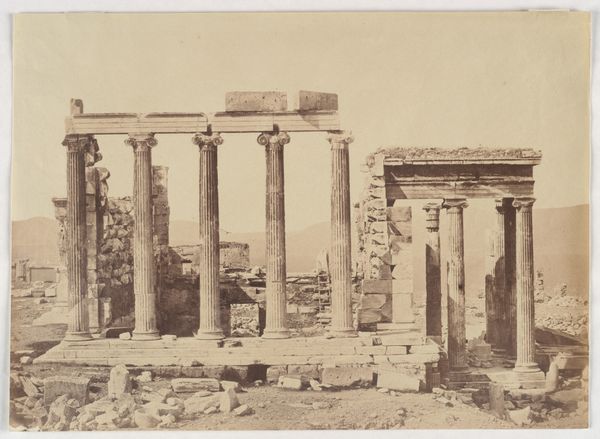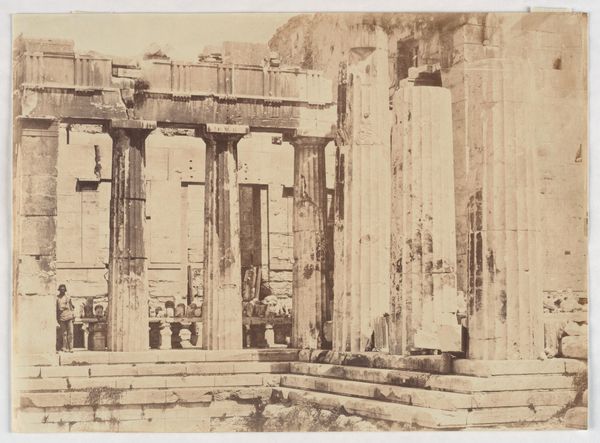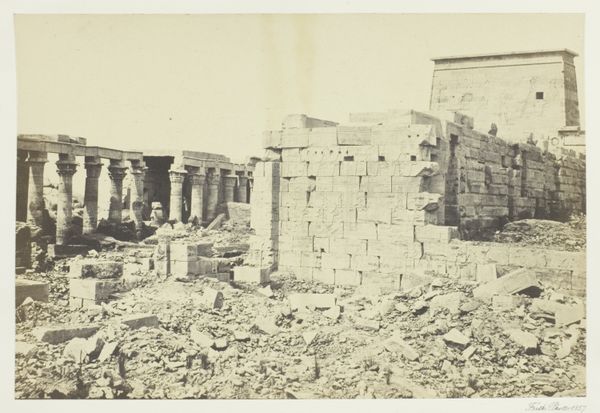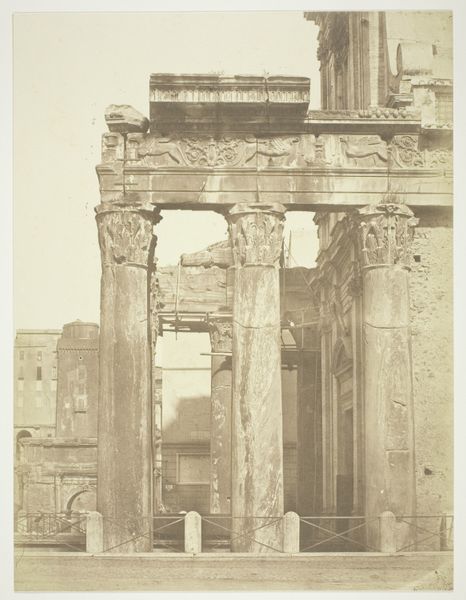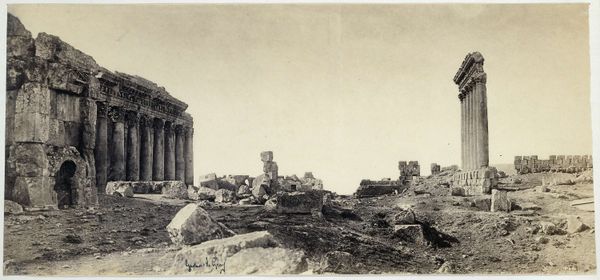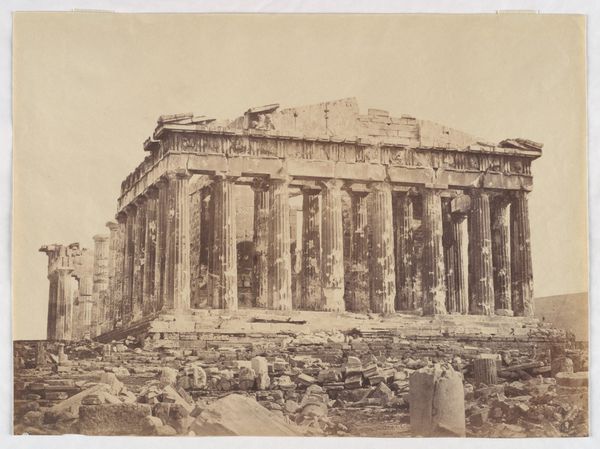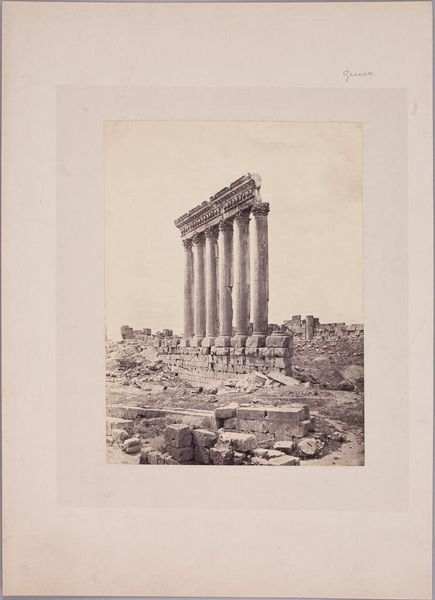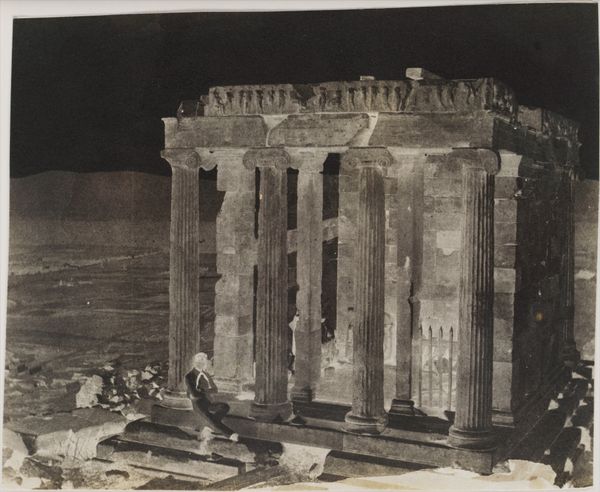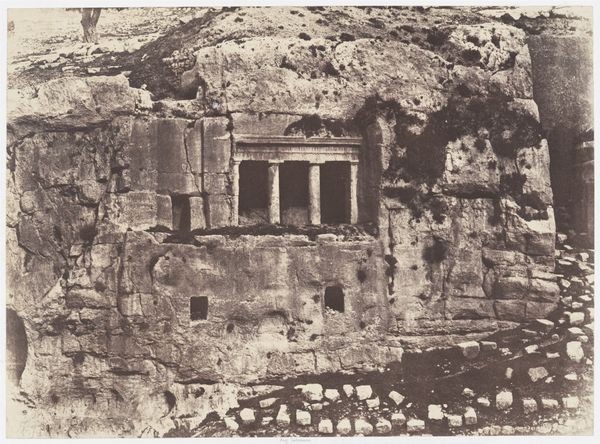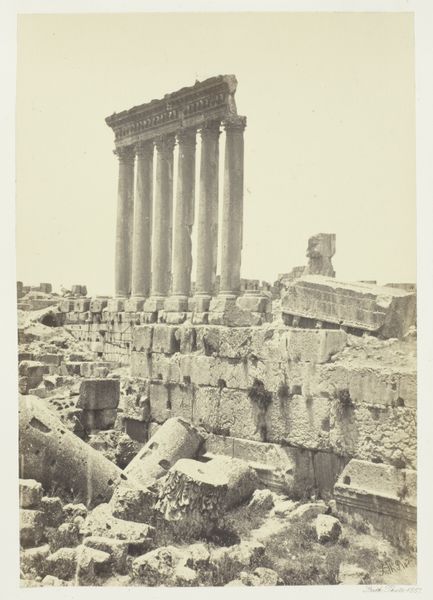![[Acropolis, Athens, Greece] by James Robertson](/_next/image?url=https%3A%2F%2Fd2w8kbdekdi1gv.cloudfront.net%2FeyJidWNrZXQiOiAiYXJ0ZXJhLWltYWdlcy1idWNrZXQiLCAia2V5IjogImFydHdvcmtzL2EyNGQ4MWVkLWEwNjItNGVmNy1iZmZlLTlmZmM0M2Y3NTg2ZS9hMjRkODFlZC1hMDYyLTRlZjctYmZmZS05ZmZjNDNmNzU4NmVfZnVsbC5qcGciLCAiZWRpdHMiOiB7InJlc2l6ZSI6IHsid2lkdGgiOiAxOTIwLCAiaGVpZ2h0IjogMTkyMCwgImZpdCI6ICJpbnNpZGUifX19&w=3840&q=75)
print, photography
# print
#
greek-and-roman-art
#
landscape
#
photography
#
cityscape
#
realism
Dimensions: Approx. 11 x 15
Copyright: Public Domain
Editor: This photograph, titled "Acropolis, Athens, Greece" by James Robertson, was taken sometime between 1850 and 1855. The print depicts the ruins of what I assume is an ancient temple. What I find particularly interesting is the stark contrast between the highly detailed columns and the more roughly hewn stone surrounding them. What strikes you when you look at this? Curator: The photo reveals a crucial point: we're looking at 19th-century documentation of a site loaded with history. But I'm less interested in the romantic ruin aspect, and more in the process that made this image. How did Robertson navigate the technical challenges of early photography to create this representation of Athens? What chemicals and labor went into producing this specific view for mass consumption? Editor: So you're saying the artistic value lies less in the subject itself, and more in the physical act of capturing it with the technology available at the time? Curator: Exactly. The photograph isn't just a transparent window onto the Acropolis. It's a manufactured object. Think about the social and economic implications of Robertson's work. Who was buying these images? How did this kind of visual consumption impact perceptions of Greece and its classical past? Editor: That’s fascinating. It shifts the focus from admiring the beauty of the ruins to understanding the means by which that beauty was packaged and sold. Curator: Precisely! The material reality of photography – the glass plates, the developing process, the printing – shaped not just the image, but the market for classical antiquity itself. Editor: I never considered photography in that light before. Thanks for the perspective! Curator: And I'm glad to have another to contemplate materiality, consumption, and labor.
Comments
No comments
Be the first to comment and join the conversation on the ultimate creative platform.
